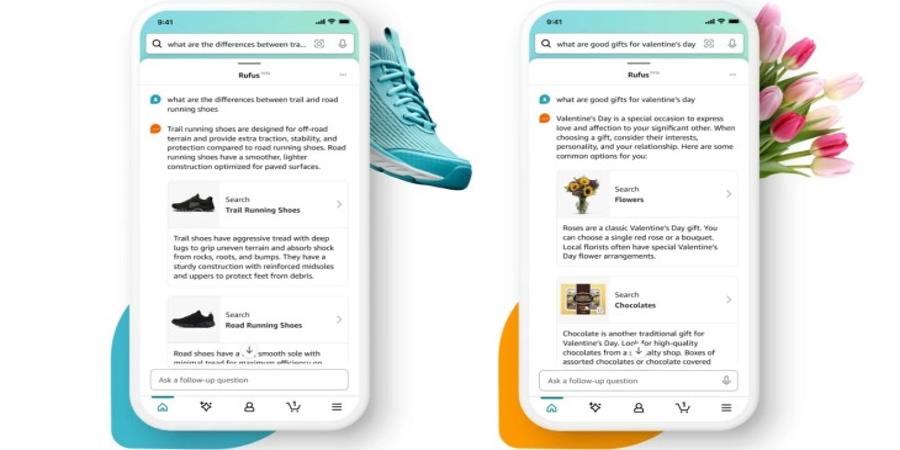Amazon announced today the launch of an AI-powered shopping assistant it’s calling Rufus that’s been trained on the e-commerce giant’s product catalog as well as information from around the web. The company says the new tool will launch to a subset of U.S. customers in beta, starting today, before expanding to more users in the weeks ahead. Customers will be able to chat with Rufus inside Amazon’s mobile app to get help with finding products, performing product comparisons, and getting recommendations on what to buy.
The launch of the AI chatbot comes on the heels of other AI-powered additions across Amazon.com aimed at improving the shopping experience for consumers, ranging from tools that help customers find clothes that fit to those that enhance product reviews with summaries of product highlights and customer sentiment, as well as others aimed at advertisers and sellers.
Rufus, meanwhile, is a generative AI experience that’s been trained on the product catalog, customer reviews, community Q&As, and information from around the web, so it can answer customers’ questions related to their shopping needs, whether they’re at the start of their shopping journey, trying to narrow down choices, or when they have more specific questions.
The company tells TechCrunch it built a new, internal LLM specialized for shopping to power this experience and then trained it on its data and “publicly available data from across the web.” It did not say if that data included other publicly available retail websites, however.
For example, Amazon suggests a customer in the market for running shoes could ask Rufus questions like “What to consider when buying a running shoe?” “What are the differences between trail and road running shoes?” or “Are these durable?”
Customers researching other products could also ask things like “What to consider when buying headphones?” “What to consider when detailing my car at home?” “What are clean beauty products?” “What do I need for cold weather golf?” and more. Or you can simply tell Rufus something you want to do, like: “I want to start an indoor garden.”
The AI can also help with product comparisons or make recommendations if you ask things like “What are good gifts for Valentine’s Day?” or “What are the best dinosaur toys for a five-year-old?” After Rufus answers, the customer can continue to browse through more refined results.
In other words, you can chat with the AI assistant much as you do with other consumer-facing AI chatbots like OpenAI’s ChatGPT or Google’s Bard — the latter of which also includes shopping integrations.
Rufus will initially be available in beta to select customers in the U.S. within the Amazon mobile app, where it’s launched by tapping on a new button in the bottom navigation bar. Customers can both type or speak their questions into the AI’s chat dialog box that appears at the bottom of the screen.
When finished, customers can return to the Amazon app by swiping down on their screen to dismiss the chat dialog box back to the bottom of the screen.
Amazon says the beta will help it to improve the product and its generative AI initiatives over time.
“It’s still early days for generative AI, and the technology won’t always get it exactly right,” the company said in a blog post. “We will keep improving our AI models and fine-tune responses to continuously make Rufus more helpful over time. Customers are encouraged to leave feedback by rating their answers with a thumbs up or thumbs down, and they have the option to provide freeform feedback as well,” it read.
The company tells us the chatbot won’t feature advertising at launch, but additional elements will be added to the Rufus experience over time if they add value for customers.
As the bot was not made available for testing, we can’t speak to its efficiency. But it’s worth pointing out that Amazon’s AI chatbot Q for businesses has struggled, producing hallucinations (false information) and revealing confidential data.
Rufus will roll out to other U.S. customers in the “coming weeks.”
Source @TechCrunch



